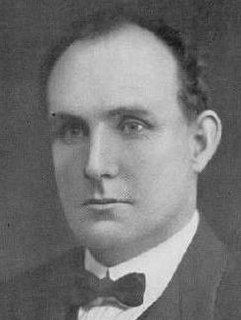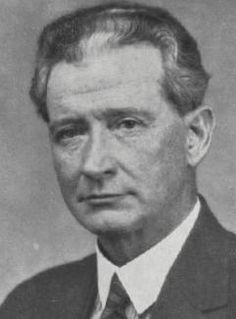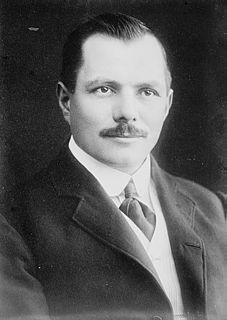Related Research Articles

Gundagai is a town in New South Wales, Australia. Although a small town, Gundagai is a popular topic for writers and has become a representative icon of a typical Australian country town. Located along the Murrumbidgee River and Muniong, Honeysuckle, Kimo, Mooney Mooney, Murrumbidgee and Tumut mountain ranges, Gundagai is 390 kilometres (240 mi) south-west of Sydney. Until 2016, Gundagai was the administrative centre of Gundagai Shire local government area. In the 2016 census the population of Gundagai was 1,925.
Owen Gilbert was an Australian politician. He was a Liberal Reform Party member of the New South Wales Legislative Assembly from 1901 to 1910, representing the electorates of Newcastle West (1901-1904) and Newcastle (1904-1910).

The Central West is a region of New South Wales, Australia. The region is geographically in eastern New South Wales, in the area west of the Blue Mountains, which are west of Sydney. It has an area of 63,262 square kilometres (24,426 sq mi).

Thomas James Lavelle was an Australian politician. He was an Australian Labor Party member of the Australian House of Representatives from 1919 to 1922, representing the electorate of Calare.

Samuel Robert Nicholls was an Australian politician. He was an Australian Labor Party member of the Australian House of Representatives from 1917 to 1922, representing the electorate of Macquarie.

Joseph Herbert Gander was an Australian politician. He was a member of the Australian House of Representatives from 1931 to 1940, representing the Sydney-based seat of Reid for the first Lang Labor (1931-1936), the Australian Labor Party (1936-1940) and the second Lang Labor (1940).
The New South Wales Open is an annual golf tournament held in New South Wales, Australia. The 2019 event was held at Twin Creeks Golf and Country Club and had prize money of A$400,000. Josh Younger won the tournament, beating Travis Smyth in a playoff.
This is a list of members of the New South Wales Legislative Assembly from 1882 to 1885.</ref> Elections for the eleventh Legislative Assembly were held between 30 November and 21 December 1882 with parliament first meeting on 3 January 1883. The Assembly was expanded to 113 members elected in 40 single member electorates, 26 two member electorates, 3 three member electorate and 3 four member electorates. The parliament had a maximum term of 3 years and was dissolved on 7 October 1885 after 33 months. The Premiers during this parliament were Alexander Stuart until 7 October 1885 and then George Dibbs.

Hugh Donald "Huge Deal" McIntosh was an Australian show-business entrepreneur born to parents of Scottish and Irish origin and modest means in Sydney's Surry Hills, at that time a ramshackle suburb with a reputation for crime and vice among the largely Irish immigrant population. His policeman father Hugh Fraser McIntosh died when he was four.
The Birth of White Australia is a 1928 Australian silent film directed by Phil K. Walsh. It is an historical drama about the settlement of white Australia, including scenes of Captain Cook's landing at Botany Bay, skirmishes with Australian Aborigines and the Lambing Flat riots. This was Australia's last silent feature film, thanks to the advent of "talkies".

William Chandos Wall was an Australian politician. He was also a prospector, geologist, minerals surveyor, commission / mining agent, inventor and a quarry and mine operator before and after entering politics. In June 1886 he was elected to the New South Wales Legislative Assembly to succeed the former NSW premier Sir John Robertson KCMG as one of the members for Mudgee. In 1894 Wall transferred to Rylstone and in July 1895 he lost the Rylstone seat.

The Prince Alfred Bridge is a wrought iron truss and timber beam former road bridge over the Murrumbidgee River and its floodplain at Middleton Drive, Gundagai, Cootamundra-Gundagai Regional Council, New South Wales, Australia. The heritage-listed road bridge was designed by William Christopher Bennett and built from 1864 to 1867 by Francis Bell. It is also known as Prince Alfred Bridge - Iron Road Bridge and Iron Bridge over Murrumbidgee River at Gundagai. The property is owned by Roads and Maritime Services, an agency of the Government of New South Wales. The bridge was added to the New South Wales State Heritage Register on 5 July 2019 and on the Register of the National Estate on 21 March 1978.
The Coonabarabran Shire was a local government area in the Orana region of New South Wales, Australia. The Shire was proclaimed on 7 March 1906 with the enactment of the Local Government (Shires) Act 1905 and was centred on the town of Coonabarabran, but also covered a wide area extending to smaller towns, such as Baradine and Binnaway. On 25 August 2004, the Shire voluntarily amalgamated with the adjoining Coolah Shire to form the Warrumbungle Shire.
In 2013 Bathurst, New South Wales, Australia celebrates 200 years from its naming as a town in 1813. Over the 200 years significant milestones have occurred in the town and regions infrastructure development to support growth of the region. The development of Australia progressed with a few frontier towns built in extreme isolation like Bathurst. Sydney was founded in 1788 and 25 years later in 1813 only a few other coastal towns had been established. The desire to explore the unknown areas led the Colonial Government to sponsor expeditions to the interior of the vast country. A large mountain range running parallel to the Sydney coast blocked access to the west and rugged mountains and a river blocked access to the north. Before the exploration of the inland started they had no idea what they would find but what they did discover was fertile and well watered land ideal for grazing of animals and producing agricultural products.
New South Wales experienced the first gold rush in Australia, a period generally accepted to lie between 1851 and 1880. This period in the history of New South Wales resulted in a rapid growth in the population and significant boost to the economy of the colony of New South Wales. The California Gold Rush three years prior signaled the impacts on society that gold fever would produce, both positive and negative. The New South Wales colonial government concealed the early discoveries, but various factors changed the policy.

The Gundagai Times and Tumut, Adelong, and Murrumbidgee District Advertiser, often referred to as simply the Gundagai Times, was a newspaper published in Gundagai, New South Wales, Australia from 1868 to 1931. It was a direct successor of The Wynyard Times and Tumut and Adelong Advertiser and The Tumut and Adelong Times, published in Tumut, New South Wales, and was absorbed into The Gundagai Independent in 1931.

Herbert De Pinna (1883–1936) was a composer and doctor. He was a medicine graduate from Cambridge University who trained at Middlesex Hospital. He opened a hospital in Queensland, but claimed he made more money from music.
The 1904 New South Wales state election involved 90 electoral districts returning one member each. The election was conducted on the basis of a simple majority or first-past-the-post voting system. There were two significant changes from the 1901 election, the first was that women were given the right to vote, which saw an increase in the number of enrolled voters from 345,500 in 1901, to 689,490 in 1904. The second was that as a result of the 1903 New South Wales referendum, the number of members of the Legislative Assembly was reduced from 125 to 90. The combined effect of the changes meant that the average number of enrolled voters per electorate went from 2,764, to 7,661, an increase of 277%. Leichhardt was the only district that was not substantially changed, while The Macquarie and The Murray districts retained nothing but the name.
Maxwell Hamilton Osbiston was an Australian actor, active in radio, stage, film and television.
Gordon Tidy was a journalist in Australia before returning to England as a minister of religion, among other occupations. His friendships included with poets Will H. Ogilvie (1869–1963), A. B. 'Banjo' Paterson (1864–1941), Arthur Bayldon (1865–1958), and Henry Lawson (1867–1922), and war historian Charles E. W. Bean (1879–1968).
References
- ↑ "Family Notices". The Sydney Morning Herald . New South Wales, Australia. 14 May 1935. p. 10. Retrieved 11 March 2020– via Trove.
- 1 2 "Gundagai's Laugh Day". The Gundagai Independent and Pastoral, Agricultural and Mining Advocate . New South Wales, Australia. 18 November 1926. p. 2. Retrieved 24 February 2020– via Trove.
- ↑ "La Tosca". The Cootamundra Herald . New South Wales, Australia. 20 July 1892. p. 5. Retrieved 11 March 2020– via Trove.
- ↑ "All for Gold". The Riverine Herald . New South Wales, Australia. 10 October 1892. p. 2. Retrieved 11 March 2020– via Trove.
- ↑ "Greta". The Maitland Mercury and Hunter River General Advertiser . New South Wales, Australia. 3 June 1893. p. 7. Retrieved 11 March 2020– via Trove.
- ↑ "Victoria Theatre, Bewcastle". Truth (Sydney newspaper) . New South Wales, Australia. 29 December 1895. p. 2. Retrieved 11 March 2020– via Trove.
- ↑ "On the Corner". Truth (Sydney newspaper) . New South Wales, Australia. 2 September 1894. p. 2. Retrieved 27 February 2020– via Trove.
- ↑ "Mr. Phil Walsh". Mudgee Guardian and North-western Representative . New South Wales, Australia. 7 November 1901. p. 13. Retrieved 24 February 2020– via Trove.
- ↑ "Amusements". The Newsletter: an Australian Paper for Australian People . New South Wales, Australia. 30 August 1902. p. 6. Retrieved 26 February 2020– via Trove.
- ↑ "General Gossip". The Referee (newspaper) . New South Wales, Australia. 19 November 1902. p. 10. Retrieved 26 February 2020– via Trove.
- ↑ "General Gossip". The Referee (newspaper) . New South Wales, Australia. 16 September 1903. p. 10. Retrieved 24 February 2020– via Trove.
- ↑ "untitled". The Catholic Press . New South Wales, Australia. 14 December 1905. p. 4. Retrieved 26 February 2020– via Trove.
- ↑ "Amusements". Freeman's Journal . New South Wales, Australia. 24 June 1905. p. 26. Retrieved 26 February 2020– via Trove.
- ↑ "Andrew Mack's Season". Freeman's Journal . New South Wales, Australia. 26 September 1907. p. 22. Retrieved 26 February 2020– via Trove.
- ↑ "Local Brevities". Mudgee Guardian And North-western Representative . New South Wales, Australia. 26 March 1908. p. 21. Retrieved 26 February 2020– via Trove.
- 1 2 3 "A Local Author". The Leader (Orange, NSW) . New South Wales, Australia. 22 September 1920. p. 2. Retrieved 12 March 2020– via Trove.
- ↑ "In Filmland". The Daily News (Perth) . Western Australia. 6 October 1922. p. 4. Retrieved 28 February 2020– via Trove.
- 1 2 3 "Personal". The Daily Express (Sydney) . New South Wales, Australia. 14 June 1922. p. 2. Retrieved 9 March 2020– via Trove.
- ↑ "Music and Drama". The Sydney Morning Herald . New South Wales, Australia. 24 March 1923. p. 10. Retrieved 24 February 2020– via Trove.
- ↑ "Film Flashes". The National Advocate . Bathurst, New South Wales. 11 March 1927. p. 6. Retrieved 24 February 2020– via Trove.
- ↑ "Gifted Lady Passes". Windsor And Richmond Gazette . New South Wales, Australia. 26 September 1945. p. 4. Retrieved 28 February 2020– via Trove.
- ↑ "To Film Gunning". The Nowra Leader . New South Wales, Australia. 2 April 1926. p. 2. Retrieved 28 February 2020– via Trove.
- ↑ "The Show Ends". The Young Chronicle . New South Wales, Australia. 7 September 1928. p. 1. Retrieved 24 February 2020– via Trove.
- ↑ "Out of Town News". The Sydney Morning Herald . New South Wales, Australia. 17 May 1934. p. 4. Retrieved 24 February 2020– via Trove.
- ↑ "On the Corner". Truth (Sydney newspaper) . New South Wales, Australia. 6 January 1895. p. 2. Retrieved 26 February 2020– via Trove.
- ↑ "Irve Hayman's Dramatic Co". Queanbeyan Age . New South Wales, Australia. 26 November 1898. p. 2. Retrieved 28 February 2020– via Trove.
- ↑ "Palace Theatre". The Evening News (Sydney) . New South Wales, Australia. 26 November 1903. p. 8. Retrieved 26 February 2020– via Trove.
- ↑ "Catty comments". The Newsletter: an Australian Paper for Australian People . New South Wales, Australia. 20 July 1907. p. 3. Retrieved 26 February 2020– via Trove.
- ↑ "Family Notices". The Sun (Sydney) . New South Wales, Australia. 9 October 1939. p. 5. Retrieved 25 February 2020– via Trove.
- ↑ "The Olive Burke Company". The Grafton Argus and Clarence River General Advertiser . New South Wales, Australia. 5 March 1908. p. 4. Retrieved 25 February 2020– via Trove.
- ↑ "Personalities". Wellington Times . New South Wales, Australia. 27 April 1950. p. 7. Retrieved 25 February 2020– via Trove.
- ↑ "Obituary". The Leader (Orange, NSW) . New South Wales, Australia. 12 February 1936. p. 2. Retrieved 25 February 2020– via Trove.
- ↑ "Obituary". The Leader (Orange, NSW) . New South Wales, Australia. 12 February 1936. p. 2. Retrieved 11 March 2020– via Trove.
- ↑ "Family Notices". The Sydney Morning Herald . New South Wales, Australia. 14 May 1935. p. 10. Retrieved 25 February 2020– via Trove.
- ↑ ""The Wife of the King's Counsel"". The Leader (Orange, NSW) . New South Wales, Australia. 22 September 1920. p. 2. Retrieved 9 March 2020– via Trove.